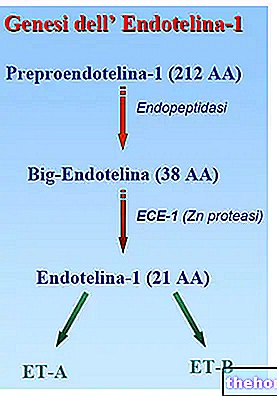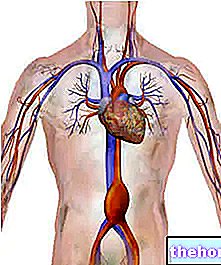See also: Cholesterol and cardiovascular risk
Cardiovascular risk quantifies the likelihood of suffering a disease affecting the heart or blood vessels based on the presence or absence of certain predisposing factors.

Risk factors
The Cardiovascular Risk Factors can traditionally be divided into
- non-modifiable factors (sex, age, family history)
- factors that can be corrected through correct lifestyles and / or pharmacological treatments.
Correctable risk factors include:
- insulin resistance and / or hyperinsulinemia
- diabetes mellitus
- smoking habit
- hypertension
- overweight, obesity, abdominal circumference> 102 cm in men or> 88 cm in women
- early menopause
- LDL hypercholesterolemia
- HDL hypocholesterolemia
- hypertriglyceridemia
- MPV> 12 fl
- hyperhomocysteinemia
- inadequate diet
- alcohol and drug abuse
- stress
- low level of education
- sedentary lifestyle
- elevated values of fibrinogen and C-reactive protein in the blood
- antithrombin III deficiency.
High Cholesterol and Cardiovascular Risk
High cholesterol is undoubtedly an important cardiovascular risk factor, but its relevance in the genesis of these diseases - which we have seen to be multi-factorial aetiology - has long been overestimated.
Today, the choice to undertake or not a specific drug therapy is not dictated by the exceeding of a particular total cholesterol value, but by the overall evaluation of the subject's cardiovascular risk.
The identification of people with medium and high cardiovascular risk allows taking actions capable of positively modifying the lifestyle and other unfavorable but modifiable elements (sex and age for obvious reasons cannot be corrected).
Cardiovascular risk card
On the basis of these elements, the Higher Institute of Health (ISS) drew up the so-called cardiovascular risk card a few years ago. It is a series of tables and suggestions that allow you to calculate the risk of suffering a major cardiovascular event (heart attack and stroke), fatal or non-fatal, in the next 10 years, in subjects who have not already suffered one. Although this card has its limitations (for example, it is only useful in primary prevention and excludes population groups under 40 and more than 70 years), represents a valid tool available to general practitioners.
To estimate the absolute cardiovascular risk in the next 10 years it is necessary to consider six factors (sex, age, LDL cholesterolemia and the presence or absence of diabetes, hypertension and smoking habit).
Once the appropriate table has been identified on the basis of sex, decade of age and the presence or absence of diabetes and smoking habits, one searches for the box corresponding to one's cholesterol values (in mg / dL or in mmol / L) and systolic blood pressure (mmHg) The color of this box expresses the subject's cardiovascular risk according to the legend, and in particular the probability of incurring a major cardiovascular event in the next 10 years.
Click to enlarge and calculate cardiovascular risk


men women
Individual risk score
In addition to the cardiovascular risk card, the Istituto Superiore di Sanità has issued another tool, called the individual risk score. This aid differs from the previous one in some characteristics.
First of all, the risk assessment is not expressed in categorical but punctual form (it assigns the risk based on the score of a given parameter and not on the range to which it belongs). In addition to the risk factors considered in the card, the score also takes account of the HDL cholesterol value and the prescription of antihypertensive drugs, thus demonstrating greater accuracy in the global risk assessment. Finally, while the paper considers people aged between 40 and 69 years, it is included in the calculation of the individual score also the five years of age 35-39.
For the personalized calculation of the cardiovascular risk score it is possible to ask the attending physician for information or use the special electronic form.
Watch the video
- Watch the video on youtube
Muscle hypotrophy, body mass index and mortality risk




























